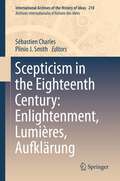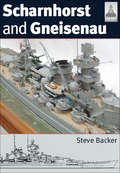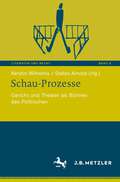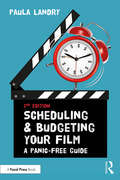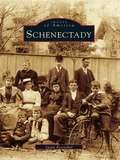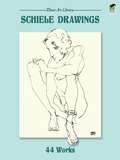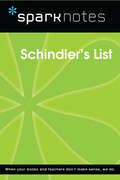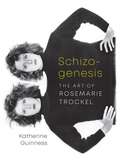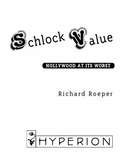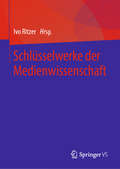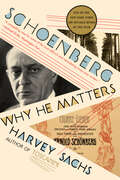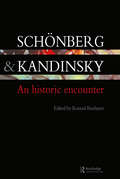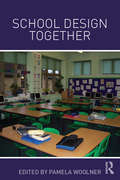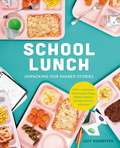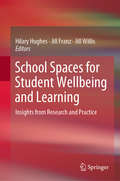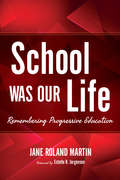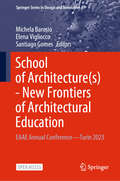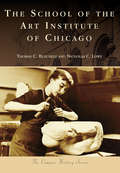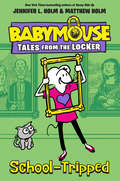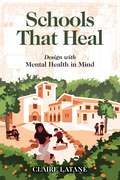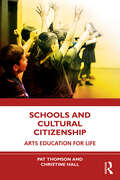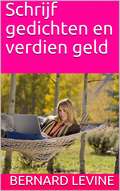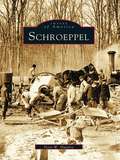- Table View
- List View
Scepticism in the Eighteenth Century: Enlightenment, Lumières, Aufklärung
by Sébastien Charles Plínio J. SmithThe Age of Enlightenment has often been portrayed as a dogmatic period on account of the veritable worship of reason and progress that characterized Eighteenth Century thinkers. Even today the philosophes are considered to have been completely dominated in their thinking by an optimism that leads to dogmatism and ultimately rationalism. However, on closer inspection, such a conception seems untenable, not only after careful study of the impact of scepticism on numerous intellectual domains in the period, but also as a result of a better understanding of the character of the Enlightenment. As Giorgio Tonelli has rightly observed: "the Enlightenment was indeed the Age of Reason but one of the main tasks assigned to reason in that age was to set its own boundaries." Thus, given the growing number of works devoted to the scepticism of Enlightenment thinkers, historians of philosophy have become increasingly aware of the role played by scepticism in the Eighteenth Century, even in those places once thought to be most given to dogmatism, especially Germany. Nevertheless, the deficiencies of current studies of Enlightenment scepticism are undeniable. In taking up this question in particular, the present volume, which is entirely devoted to the scepticism of the Enlightenment in both its historical and geographical dimensions, seeks to provide readers with a revaluation of the alleged decline of scepticism. At the same time it attempts to resituate the Pyrrhonian heritage within its larger context and to recapture the fundamental issues at stake. The aim is to construct an alternative conception of Enlightenment philosophy, by means of philosophical modernity itself, whose initial stages can be found herein.
Scharnhorst and Gneisenau: Shipcraft 20 (ShipCraft #20)
by Steve BackerA history of the service careers and advice on making models of &“perhaps the most successful of the German battleships of the Second World War&” (History of War). The ShipCraft series provides in-depth information about building and modifying model kits of famous warship types. Lavishly illustrated, each book takes the modeler through a brief history of the subject class, highlighting differences between sister-ships and changes in their appearance over their careers This includes paint schemes and camouflage, featuring color profiles and highly-detailed line drawings and scale planes. The modeling section reviews the strengths and weaknesses of available kits, lists commercial accessory sets for super-detailing of the ships, and provides hints on modifying and improving the basic kit. This is followed by an extensive photographic gallery of selected high-quality models in a variety of scales, and the book concludes with a section on research reference books, monographs, large-scale plans and relevant websites. The two German ships which form the subject of this volume were among the first products of rearmament under Hitler. For political reasons they were neither as large nor as well armed as foreign equivalents, but they were very fast, which led them to be described as battlecruisers in some quarters. They enjoyed an adventurous war, both surviving heavy damage, before Scharnhorst was sunk in an epic gun battle off the North Cape, while Gneisenau succumbed to heavy air attack.&“For both vessels, the book gives details of modifications carried out, while a wealth of clear and detailed photographs and line drawings illustrate the ships themselves, as well as items of equipment.&” —Ships Monthly
Schau-Prozesse: Gericht und Theater als Bühnen des Politischen (Literatur und Recht #8)
by Stefan Arnold Kerstin WilhelmsGerichtsprozesse wie der NSU-Prozess haben große mediale Aufmerksamkeit erfahren und sind zum Stoff von zahlreichen Theaterinszenierungen geworden. Solche publikumswirksamen ‚Schau-Prozesse‘ zeigen, wie Gericht und Theater zu Bühnen des Politischen werden. Dabei wird deutlich, dass Recht und Theater viel fundamentaler verbunden sind, als bislang diskutiert: Sie konstituieren sich gegenseitig. Theatrale Elemente sind für das Recht unverzichtbar und umgekehrt prägen Rechtsinszenierungen das Theater. Die Beiträge des interdisziplinären Bandes analysieren diese Wechselseitigkeit und fokussieren die politische Performance im Theater und im Recht.
Scheduling and Budgeting Your Film: A Panic-Free Guide (American Film Market Presents)
by Paula LandryBudgeting and scheduling are easy in principle but hard in practice. The successful producer has a solid plan for juggling dozens of activities and costs while retaining the flexibility to cope with those inevitable last-minute changes and stay on course. Preplanning the budget and schedule of any media project is absolutely essential, and the 2nd edition of Scheduling and Budgeting Your Film: A Panic-Free Guide shows you the intricacies of handling both budgeting and scheduling successfully. This new and updated edition explains the fundamentals of line producing in an easy-to-understand style, and includes tips and techniques that apply no matter what kind of scheduling or budgeting software you’re using. Author Paula Landry includes detailed examples of breakdown forms, organizing resources, distribution expenses, and hidden costs, and discusses how to set realistic priorities and find industry and state tax incentives. The new edition also includes discussions of transmedia and multi-purpose shooting, special considerations for VR, 4K and 3D shooting, new web platforms and mobile technology, crowd funding, film festivals, and much more. Each chapter is filled with handy checklists, tips, practical advice, and anecdotes, showing how scheduling and budgeting are done in the real world; Principles apply to any type of media project: film, video, music video, projects hosted online, and corporate and educational videos; An accompanying eResources page offers downloadable forms and templates, and other essential resources.
Schenectady
by Susan RosenthalMidway between New York City and Montreal lies Schenectady, an area that first developed as an outpost to the fur trade and for agriculture. Schenectady's future growth was assured by its location on two major water routes, the Mohawk River and the Erie Canal. Schenectady survived the massacre of 1690 and was chartered as a city in 1798, becoming only the third city in the state. At the time of the charter, Schenectady was 12 miles long by 18 miles wide. The city saw astounding growth during the industrial age which brought not only a flood of new enterprises and commerce but also elegant homes, cobblestone streets, gaslights, and trolley cars. Schenectady also contributed to the development of the nation: the Monitor's turret, M7 tanks, and World War II radio and radar equipment were produced here.
Schiele Drawings: 44 Works
by Egon SchieleOne of the most famous Expressionist artists of early-20th-century Vienna, Egon Schiele (1890-1918) evolved a highly personal art, strongly influenced by Art Nouveau. Focusing on the emotional state and hidden personality of his subjects, Schiele produced works that are not only models of psychological penetration but evidence of great technical mastery as well, notably in their impeccable line and superb composition.This volume contains 44 of his finest drawings: portraits, character studies, nudes, and more, all embodying the distinctive, angular expressivity that characterizes Schiele's art. Now these superb works are available in this inexpensive format, painstakingly reproduced to capture every nuance of line, shading, positions, and expression.
Schindler's List (SparkNotes Film Guide)
by SparkNotesSchindler's List (SparkNotes Film Guide) Making the reading experience fun! SparkNotes Film Guides are one-stop guides to great works of film–masterpieces that are the foundations of filmmaking and film studies. Inside each guide you&’ll find thorough, insightful overviews of films from a variety of genres, styles, and time periods. Each film guide contains:Information about the director and the context in which the film was made Thoughtful analysis of major characters Details about themes, motifs, and symbols Explanations of the most important lines of dialogue In-depth discussions about what makes a film so remarkable SparkNotes Film Guides are an invaluable resource for students or anyone who wants to gain a deeper understanding of the great films they know and love.
Schizogenesis: The Art of Rosemarie Trockel
by Katherine GuinnessA deep analysis of an enigmatic artist whose oeuvre opens new spaces for understanding feminism, the body, and identity Popular and pioneering as a conceptual artist, Rosemarie Trockel has never before been examined at length in a dedicated book. This volume fills that gap while articulating a new interpretation of feminist theory and bodily identity based around the idea of schizogenesis central to Trockel&’s work.Schizogenesis is a fission-like form of asexual reproduction in which new organisms are created but no original is left behind. Author Katherine Guinness applies it in surprising and insightful ways to the career of an artist who has continually reimagined herself and her artistic vision. Drawing on the philosophies of feminists such as Simone de Beauvoir, Shulamith Firestone, and Monique Wittig, Guinness argues that Trockel&’s varied output of painting, fabric, sculpture, film, and performance is best seen as opening a space that is peculiarly feminist yet not contained by dominant articulations of feminism. Utilizing a wide range of historical and popular knowledge—from Baader Meinhof to Pinocchio, poodles, NASA, and Brecht—Katherine Guinness gives us the associative and ever-branching readings that Trockel&’s art requires. With a spirit for pursuing the surprising and the obscure, Guinness delves deep into a creator who is largely seen as an enigma, revealing Trockel as a thinker who challenges and transforms the possibilities of bodily representation and identity.
Schlock Value: Hollywood at Its Worst
by Richard RoeperA hilarious collection of essays, riffs, and lists that celebrate the insanity of Hollywood--for anyone who loves the movies. Richard Roeper, like the rest of us, adores the movies. In this uproarious, off-beat book, he gives us a whole new set of critical lenses for assessing the movies and the people and the industry that make them. With his characteristic acerbic wit, he weaves short essays with lists that work together to explain where Hollywood succeeds--and where it so often frustrates, disappoints, and fails us. But while Roeper devotes most of the book to mockery and ridicule, this book is, in the end, a love letter to film. Some of the essays and lists included in Schlock Value: Comical statistical breakdowns, including career batting averages of actors Reviews of Hollywood finances, including budgets, salaries, and ticket prices A proposed moratorium on pet projects, e.g., Kevin Costner's The Postman or John Travolta's Battlefield Earth The age differences between Woody Allen and his various leading ladies Actors appearing around the world in television commercials, including a list of the biggest stars that do overseas commercials--and the products they push Schlock Value is the perfect book for anyone who loves grumbling and complaining about the movies--but still can't help spending their weekends and evenings in front of the screen.
Schlüsselwerke der Medienwissenschaft
by Ivo RitzerDer Band stellt ausgewählte Positionen und zentrale Ideen im disziplinären Rahmen der Medienwissenschaft vor. Schwerpunkte liegen auf medienphilosophischen Ansätzen und einer kulturtheoretischen Perspektive, die sich vor einem dezidiert geisteswissenschaftlichen Horizont konturiert. Dabei versteht der Band sich nicht nur als Handbuch und Nachschlagewerk für Studierende wie Lehrende, er soll vielmehr auch einen eigenen Beitrag zur medienwissenschaftlichen Theoriebildung leisten.
Schoenberg and Hollywood Modernism
by Kenneth H. MarcusSchoenberg is often viewed as an isolated composer who was ill-at-ease in exile. In this book Kenneth H. Marcus shows that in fact Schoenberg's connections to Hollywood ran deep, and most of the composer's exile compositions had some connection to the cultural and intellectual environment in which he found himself. He was friends with numerous successful film industry figures, including George Gershwin, Oscar Levant, David Raksin and Alfred Newman, and each contributed to the composer's life and work in different ways: helping him to obtain students, making recordings of his music, and arranging commissions. While teaching at both the University of Southern California and the University of California, Los Angeles, Schoenberg was able to bridge two utterly different worlds: the film industry and the academy. Marcus shows that alongside Schoenberg's vital impact upon Southern California Modernism through his pedagogy, compositions and texts, he also taught students who became central to American musical modernism, including John Cage and Lou Harrison.
Schoenberg: Why He Matters
by Harvey SachsA NEW YORK TIMES NOTABLE BOOK OF 2023 A New Yorker Best Book of the Year “[A]n immensely valuable source for anyone desiring an accessible overview of this endlessly controversial and chronically misunderstood giant of 20th-century music.” —John Adams, New York Times Book Review, cover review An astonishingly lyrical biography that rescues Schoenberg from notoriety, restoring him to his rightful place in the pantheon of twentieth-century composers. In his time, the Austrian American composer Arnold Schoenberg (1874–1951) was an international icon. His twelve-tone system was considered the future of music itself. Today, however, leading orchestras rarely play his works, and his name is met with apathy, if not antipathy. With this interpretative account, the acclaimed biographer of Toscanini finally restores Schoenberg to his rightful place in the canon, revealing him as one of the twentieth century’s most influential composers and teachers. Sachs shows how Schoenberg, a thorny character who composed thorny works, raged against the “Procrustean bed” of tradition. Defying his critics—among them the Nazis, who described his music as “degenerate”—he constantly battled the anti-Semitism that eventually precipitated his flight from Europe to Los Angeles. Yet Schoenberg, synthesizing Wagnerian excess with Brahmsian restraint, created a shock wave that never quite subsided, and, as Sachs powerfully argues, his compositions must be confronted by anyone interested in the past, present, or future of Western music.
Schonberg and Kandinsky: An Historic Encounter (Contemporary Music Studies)
by Konrad BoehmerFirst Published in 1998. Routledge is an imprint of Taylor & Francis, an informa company.
School Design Together
by Pamela WoolnerThe time is ripe for interdisciplinary, collaborative approaches to school design. Whatever the current funding limitations, we still need to think about how we design, organise and use space in schools for learning and teaching. This edited book ensures that we don’t start from ground zero in terms of good design. Including chapters from researchers and practitioners in architecture and education, it assesses, describes and illustrates how education and environment can be mutually supportive. The centrality of participation and collaboration between architects, educators and school users holds these diverse contributions together. The book embodies the practice as well as the principle of interdisciplinary working. Organised in two parts, this volume considers how schools are designed and used with chapters looks at current and past school environments in the UK, US and Europe. It then questions how the learning environment can be improved through participatory design processes with contributors from design and education backgrounds offering both theoretical understanding and practical ideas. Written without subject-specific jargon or assumptions, it can be used by readers from either an architectural or educational background, bridging the on-going communication gap between education and design professionals. Design and education professionals alike will appreciate the: • practical information which shows how to change or improve a learning environment • focus on evidence-based research • case studies and chapter topics including schools from across the primary and secondary sectors.
School Lunch: Unpacking Our Shared Stories
by Lucy SchaefferBought or brought? Revisit the nostalgia of the school cafeteria with this collection of interviews, vivid portraits, and elaborately reimagined food photos.Food often unites us in unexpected ways -- especially on Taco Salad Day. Drawing on material from more than seventy voices , these stories capture all walks of life -- from celebrities and chefs to a circus family, new immigrants, a creative dad whose illustrated lunch bags went viral, plenty of unlikely cultural mashups, and one genuine cafeteria lady. Their experiences are compelling, familiar, and foreign at the same time, forming a cultural time capsule. School Lunch celebrates our diversity and our shared experience. In their words:"School lunch is one of the core reasons I became a chef." -- Marcus Sammuelson"My mom, God rest her soul, was not exactly Mom-of-the-Year on this kind of stuff. She worked full-time, that womanwas not about to peel and slice fruit for me." -- Natalie Webster"I ate the same damn thing every day for six years." -- Micaela Walker"On the days when I didn't have enough food there was always a reason to start or finish a fight." -- George Foreman"We were definitely a crusts-on family." -- Daphne Oz"I used to hate that feeling of walking into the lunchroom for the first time and not knowing where to sit." -- Chinae Alexander"Every kid had some good item to trade and I had f****** applesauce." -- Sam Kass
School Spaces for Student Wellbeing and Learning: Insights from Research and Practice
by Hilary Hughes Jill Franz Jill WillisThis book introduces a new wellbeing dimension to the theory and practice of learning space design for early childhood and school contexts. It highlights vital, yet generally overlooked relationships between the learning environment and student learning and wellbeing, and reveals the potential of participatory, values-based design approaches to create learning spaces that respond to contemporary learners’ needs. Focusing on three main themes it explores conceptual understandings of learning spaces and wellbeing; students’ lived experience and needs of learning spaces; and the development of a new theory and its practical application to the design of learning spaces that enhance student wellbeing. It examines these complex and interwoven topics through various theoretical lenses and provides an extensive, current literature review that connects learning environment design and learner wellbeing in a wide range of educational settings from early years to secondary school. Offering transferable approaches and a new theoretical model of wellbeing as flourishing to support the design of innovative learning environments, this book is of interest to researchers, tertiary educators and students in the education and design fields, as well as school administrators and facility managers, teachers, architects and designers.
School Was Our Life: Remembering Progressive Education (Counterpoints: Music and Education)
by Estelle R. Jorgensen Jane Roland MartinThe late 1930s and early 1940s were the peak of progressive education in the United States, and Elisabeth Irwin's Little Red School House in New York City was iconic in that movement. For the first time, stories and recollections from students who attended Little Red during this era have been collected by author Jane Roland Martin. Now in their late eighties, these classmates can still sing the songs they learned in elementary school and credit the progressive education they loved with shaping their outlooks and life trajectories. Martin frames these stories from the former students "tell it like it was" point of view with philosophical commentary, bringing to light the underpinnings of the kind of progressive education employed at Little Red and commenting critically on the endeavor. In a time when the role of the arts in education and public schooling itself are under attack in the United States, Martin makes a case for a different style of education designed for the defense of democracy and expresses hope that an education like hers can become an opportunity for all.
School of Architecture: EAAE Annual Conference—Turin 2023 (Springer Series in Design and Innovation #47)
by Michela Barosio Santiago Gomes Elena ViglioccoThis open access book gathers the latest advances and innovations in the field of architectural education, as presented at the 2023 annual conference of the European Association for Architectural Education (EAAE AC), “School of Architecture(s)”, held in Turin, Italy, on August 30–September 1, 2023.
School of the Art Institute of Chicago, The (Campus History)
by Nicholas C. Lowe Thomas C. BuecheleIn 2016, the School of the Art Institute of Chicago (SAIC) reached its 150th year. What sustains an institution is sometimes extraordinary, sometimes mundane, and often simply a matter of the sheer will of those involved. An unparalleled museum school, SAIC embodies something greater than the individuals who have passed through it, and yet it has also depended upon the unique and special nature of its protagonists—its founders who survived the Great Chicago Fire and rebuilt the school, a president who cast the hands and face of Abraham Lincoln, an alumna who was a celebrated illustrator and an activist in the women’s suffrage movement, the creators of monumental sculptures throughout the country, and numerous scholars of art history and technique—to challenge and shape its form. The school’s history is punctuated by marvelous moments of heightened public discourse in art making and scholarship. This book represents a glimpse into the lives of generations of students, staff, and faculty as full participants in an astounding learning environment.
School-Tripped (Babymouse Tales from the Locker #3)
by Jennifer L. HolmWatch out, Big City! Babymouse is on a field trip without a chaperone in the third book in the Babymousetastic, highly illustrated Babymouse: Tales from the Locker series.Babymouse's art class is headed to a museum in the Big City. And now that they're middle schoolers, she and her friends will be totally unsupervised! She can't wait to check out all the world-famous art...that is, until she overhears Felicia Furrypaws planning to ditch the museum and hit the town instead. Babymouse decides to test her freedom with an urban adventure of her own. Will she make it back to the museum before the bus leaves? Or will life in the Big City trip her up big-time?
Schooling in Modernity
by Paola BonifazioBetween 1948 and the end of the 1950s, Italian and American government agencies and corporations commissioned hundreds of short films for domestic and foreign consumption on topics such as the fight against unemployment, the transformation of rural and urban spaces, and the re-establishment of democratic regimes in Italy and throughout Europe. In Schooling in Modernity, Paola Bonifazio investigates the ways in which these sponsored films promoted a particular vision of modernization and industry and functioned as tools to govern the Italian people.The author uses extensive archival research and various theoretical approaches to examine the politics of sponsored filmmaking in postwar Italy. Among the many topics explored are target audiences and audience response, sources of funding, censorship, debates on cinematic realism, and the connections and differences between American and Italian strategies and styles of documentary filmmaking. Insightful and richly detailed, Schooling in Modernity shows the importance of these under-appreciated films in the postwar modernization process, the transition from Fascism to democracy, and Italy's involvement in the Cold War.
Schools That Heal: Design with Mental Health in Mind
by Claire LataneWhat would a school look like if it was designed with mental health in mind? Too many public schools look and feel like prisons, designed out of fear of vandalism and truancy. But we know that nurturing environments are better for learning. Access to nature, big classroom windows, and open campuses consistently reduce stress, anxiety, disorderly conduct, and crime, and improve academic performance. Backed by decades of research, Schools That Heal showcases clear and compelling ways—from furniture to classroom improvements to whole campus renovations—to make supportive learning environments for our children and teenagers. With invaluable advice for school administrators, public health experts, teachers, and parents Schools That Heal is a call to action and a practical resource to create nurturing and inspiring schools for all children.
Schools and Cultural Citizenship: Arts Education for Life
by Christine Hall Pat Thomson‘Why study the arts at school?’ This book offers a fresh perspective on this question. Informed by rigorous research, the book argues that the arts help young people to develop key skills, knowledge and practices that support them to become both critical appreciative audiences and socially engaged cultural producers. Drawing on a three-year study in partnership with the Royal Shakespeare Company and Tate, Cultural Citizenship sets out an ecological model for cultural citizenship that goes beyond the classroom, including families, the media and popular culture. The authors introduce new, interrelated concepts to change how we consider arts education. Chapters provide fresh insights, guidance and practical recommendations for educators, including: An introduction to the Tracking Arts Learning and Engagement research Detailed case studies featuring arts rich schools and arts-broker teachers Immersive professional development for teachers and the benefits of partnerships with arts organisations An ecological model for cultural citizenship Focusing on the ways in which cultural citizenship can be taught and learnt, this is an essential read for arts educators, education staff in arts organisations, researchers, postgraduate students, arts education activists and policy makers.
Schrijf gedichten en verdien geld
by Bernard LevineSchrijf je gedichten? Je kunt nu betaald worden voor de poëzie die je schrijft en je gedichten laten publiceren in wenskaarten, kalenders, posters en muurplaten. Als u uw schrijfdromen wilt waarmaken en geld wilt krijgen voor uw poëzie, is dit unieke boek speciaal voor u. Gedichten schrijven voor geld is heel leuk en zeer winstgevend! Krijg betaald om te doen waar je van houdt.
Schroeppel
by Peter W. HuntleyCarved out of the wilderness at the end of the Revolutionary War, Schroeppel is a central New York town located in the southern section of Oswego County. The town comprises the communities of Oak Orchard, Gilberts Mills, Pennellville, and Phoenix. Schroeppel presents the unique story of this town from the days of the Paleo Indians of eleven thousand years ago to the suburban growth that reached the town by the 1980s. With a selection of some two hundred photographs, the book portrays the daily life of farmers whose hard work built and sustained the town; the site of the first frame house in the town (that of George C. Schroeppel); Underground Railroad routes; and the place where tools and other implements of daily life were invented and perfected.
